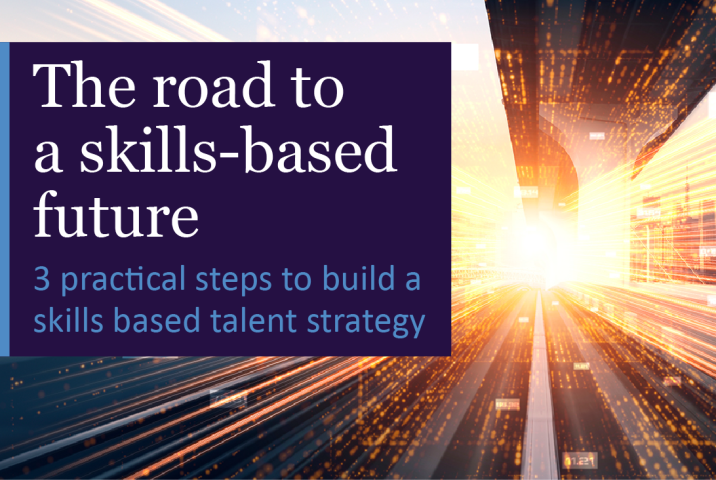Changing talent strategies in APAC
28 March 2020 — In my last post, I outlined the many talent challenges employers are facing in APAC. While the ever-complex and ambiguous people landscape in this region means there will never be a one-size-fits-all approach to total talent solutions, there are a number of strategic changes that need to be considered for businesses to truly compete for top skills in APAC.
Engaging a complex audience
Managers now need to engage and drive a workforce the likes of which they have never seen. A growing reliance on ‘nonemployees’ will see talent attraction and retention encompass contingent and temporary workers, freelancers, ‘the crowd’, outsourced services and alumni. Virtual teams are becoming the norm and a more holistic and diverse take on how to acquire talent is being accepted as a necessity. There’s also been increasing movement towards embracing flexibility. As millennials drive a shift in mindsets to the opportunities that a less rigid approach to employment can bring to businesses and individuals alike, employers are reconsidering the structure of their workforce. In fact, AMS has managed to reduce attrition in Manilla to 12% from 38% simply by introducing the option to work from home – a welcome step for a talent pool where daily commutes can be upwards of four hours.
Navigating the seven disruptors of work
On a global scale, employers are facing numerous disruptors to the way businesses operate, and these are certainly being felt in APAC:
- There’s a tsunami of data that is now being collected and analysed worldwide
- Diversity and generational change are impacting the make-up of workforces
- Tech is everywhere
- AI, cognitive computing and robotics are driving evolution across almost every industry
- Jobs are vulnerable to automation
- There’s an explosion in contingent work driven by a shift in talent preferences and skills shortages
- We’re seeing a change in the nature of a ‘career’ where flexibility is normal
While these disrupters are changing the way companies operate, the biggest impact is on the type of talent organisations need, and how they engage with these audiences.
Embracing automation and partnerships: a new workforce strategy
Perhaps the greatest change needed in people strategies in APAC, in this new environment, is the need to add two additional prongs to the ‘build, borrow and buy’ total workforce strategy of old: partner and automate. With the growth of technological innovation, robots and AI are filling gaps that employers have previously struggled with.
In order to have a workforce to hand that is future-proof and sustainable, strategies now need to follow all of the below:
- Build non-hierarchical and agile organisational structures that allow talent to move across the company in a manner that best supports the needs of the business and individual. In order to best develop talent, active and mobile career coaching should be embraced and continuous learning and development — that is driven by employee and employer alike — needs to be encouraged. An open and collaborative approach to professional development will help retain top talent across APAC as the way of work evolves. This includes providing personalized, supportive and flexible working arrangements.
- Borrow the additional resources needed. Harness multiple opportunities to engage non-permanent staff and ensure they are included in the workforce, rather than deemed a temporary necessity, in order to build a pool of highly engaged ‘non-employees’ that can be tapped into when required.
- Buy external talent from broader and more diverse talent pools, from early years to mature talent. We’re already beginning to shift from hiring for skills and experience to recruiting for mindset and potential — a move that we certainly expect to continue in the near future.
- Partner with others. Leverage external partnerships to utilize subject matter experts for non-core activities. Look at where external specialists can build talent pools for your business and consider talent swaps to fill temporary resourcing needs that can’t be met with existing connections.
- Automate where relevant and necessary, but make the automation feel human. Take a ‘bots and bodies’ approach that provides a balance between people and tech to drive the best possible candidate experience and keep talent pools engaged on a consistent basis.
The digitization of the world of work is another crucial factor that needs to be considered in these talent strategies. However, this topic is a whole post on its own — stay posted for my final installment where I’ll outline how employers can embrace the digital agenda in APAC with a total talent approach to people strategies.
More articles
Building a Robust AI Governance Capability at AMS
AMS builds a robust AI governance framework, focusing on ethics, compliance, risk management, and training, ensuring responsible AI development and deployment. is and explore its benefits, from flexibility and cost savings to access to specialized skills.
AMS launches Ethical AI in Talent Board
AMS launches Ethical AI in Talent Board to ensure fair, unbiased AI use in recruitment. Experts will guide ethical AI adoption across the talent lifecycle.
The road to a skills-based future
Learn how to reframe talent for the future. Don’t miss the opportunity to unlock organizational potential and meet tomorrow’s challenges, starting now.

Start your journey to True Workforce Dexterity.
Discover how we can help you build, re-shape and optimise your workforce.
Talk to us






